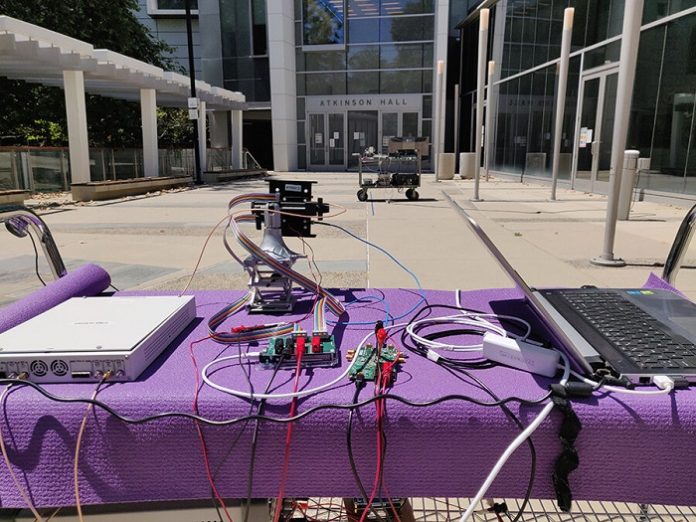
Consumers of today’s 5G cellphones may have experienced one of the following tradeoffs: impressive download speeds with extremely limited and spotty coverage, or widespread and reliable coverage with speeds that aren’t much faster than today’s 4G networks.
A new technology developed by electrical engineers at the University of California San Diego combines the best of both worlds and could enable 5G connectivity that is ultra-fast and reliable at the same time.
The technology presents a solution to overcome a roadblock to making the high band 5G practical for the everyday user: the speedy wireless signals, known as millimetre waves, cannot travel far and are easily blocked by walls, people, trees and other obstacles.
Today’s high band 5G systems communicate data by sending one laser-like millimetre wave beam between a base station and a receiver—for example, a user’s phone. The problem is if something or someone gets in the way of that beam’s path, then the connection gets blocked completely.
The team came up with a clever solution: split the one laser-like millimetre wave beam into multiple laser-like beams, and have each beam take a different path from the base station to the receiver. The idea is to improve the chances that at least one beam reaches the receiver when an obstacle is in the way.
The researchers created a system capable of doing this and tested it inside an office and outside a building on campus. The system provided a high throughput connection (up to 800 Mbps) with 100% reliability, which means that the signal didn’t drop or lose strength as the user moved around obstacles like desks, walls and outdoor sculptures. In outdoor tests, the system provided connectivity up to 80 meters (262 feet) away.
To create their system, the researchers developed a set of new algorithms. One algorithm first instructs the base station to split the beam into multiple paths. Some of these paths take a direct shot from the base station and the receiver; and some paths take an indirect route, where the beams bounce off what are called reflectors—surfaces in the environment that reflect millimetre waves like glass, metal, concrete or drywall—to get to the receiver. The algorithm then learns which are the best paths in the given environment. It then optimizes the angle, phase and power of each beam so that when they arrive at the receiver, they combine constructively to create a strong, high quality and high throughput signal.
With this approach, more beams result in a stronger signal.
You would think that splitting the beam would reduce the throughput or quality of the signal. But with the way that the team designed their algorithms, it turns out mathematically that our multi-beam system gives you a higher throughput while transmitting the same amount of power overall as a single-beam system.
The other algorithm maintains the connection when a user moves around and when another user steps in the way. When these happen, the beams get misaligned. The algorithm overcomes this issue by continuously tracking the user’s movement and realigning all the beam parameters.
The team is now working on scaling its system to accommodate multiple users.
ELE Times
-
ELE Timeshttps://www.eletimes.com/author/eletimes-newsImprove Machine Learning Performance by Dropping the Zeros
-
ELE Timeshttps://www.eletimes.com/author/eletimes-newsBD Soft Ties up with Data Resolve, Strengthens its Offerings in Cyber Security & Enterprise Intelligence
-
ELE Timeshttps://www.eletimes.com/author/eletimes-newsCombined Approach Finds Best Direct Trajectory for Robot Path Generation
-
ELE Timeshttps://www.eletimes.com/author/eletimes-newsOne Material with Two Functions Could Lead to Faster Memory